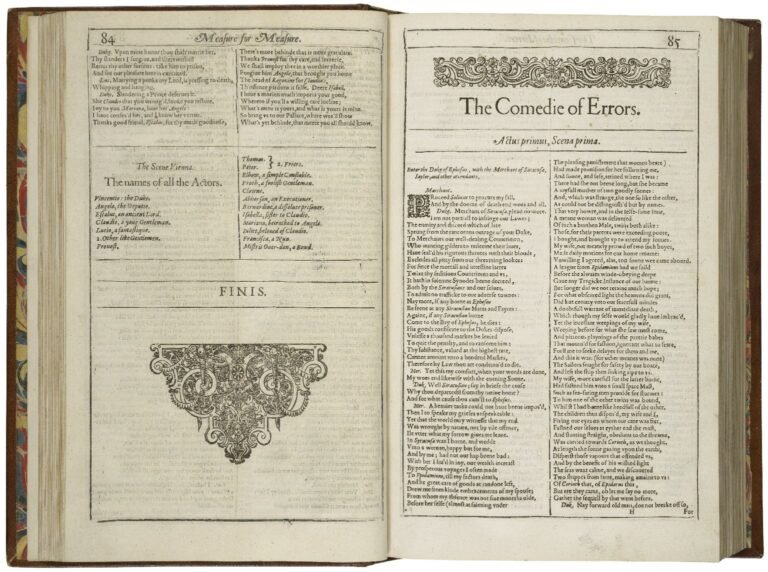“The Merchant of Venice” by William Shakespeare explores prejudice and discrimination.
Introduction: “The Merchant of Venice” explores the intricate themes of prejudice and discrimination.
William Shakespeare‘s timeless classic, The Merchant of Venice delves into the complex issues of prejudice and discrimination that have plagued societies for centuries. It explores prejudice and discrimination through societal biases and character mistreatment. Set against the backdrop of 16th-century Venice, the play masterfully exposes the harsh realities of bias and bigotry through its rich character development, intricate plot, and thought-provoking dialogues. In this blog post, we will embark on a journey to explore how Shakespeare confronts and unravels these themes, shedding light on the consequences of societal prejudices and the potential for redemption and change.
A Divided Society
Venice, the bustling merchant city where the play is set, is divided along various lines: between Christians and Jews, the wealthy and the indebted, and those in power and those on the fringes of society. The central character, Shylock, a Jewish moneylender, is a poignant representation of the discrimination faced by minority groups. His experiences reflect the systemic bias ingrained in Venetian society, where Jews were marginalized and subjected to ridicule, abuse, and exclusion.
Shylock: Victim or Villain?
Shylock’s character is at the heart of the play’s exploration of prejudice. At first glance, he appears to be a villain, driven by a desire for revenge against Antonio, the titular merchant, who has mistreated him. However, a closer examination of Shylock’s motivations reveals a deeper complexity. His anger and desire for the infamous pound of flesh stem from years of humiliation and discrimination. His famous speech, “Hath not a Jew eyes?” poignantly humanizes him, emphasizing that Jews share the same emotions and experiences as Christians. This speech challenges the audience to question their own biases and preconceptions.

The Pound of Flesh Bond
The dramatic centerpiece of the play is the pound of flesh bond that Antonio agrees to with Shylock. This bond is a testament to the dehumanization and discrimination faced by Shylock. His insistence on the bond is not only a quest for revenge but also a demand for justice in a society that has repeatedly denied him his rights. The trial scene that ensues underscores the inherent prejudice within the legal system, as the Duke and other Venetian officials favor Antonio and display little empathy for Shylock.
Portia’s Disguise and the Caskets

Portia, a wealthy heiress, also engages in a form of deception to address prejudice. Disguised as a male lawyer, she intervenes in the trial and uses her intelligence to outwit Shylock. This tactic reveals the power dynamics at play in a society where women were often underestimated and marginalized. Furthermore, the test of the caskets that Portia’s suitors must undergo is another reflection of societal bias. The caskets are designed to determine the worthiness of Portia’s suitors based on appearances, highlighting the shallowness of human judgment.
Jessica: A Bridge Between Worlds
Jessica, Shylock’s daughter, serves as a bridge between the Christian and Jewish worlds in the play. Her conversion to Christianity and elopement with Lorenzo, a Christian, symbolize the possibility of breaking down barriers and finding common ground. However, her conversion also represents the allure of assimilation, where individuals from marginalized communities may feel compelled to adopt the dominant culture to escape discrimination.
Redemption and Forgiveness
The Merchant of Venice offers a glimmer of hope amid its exploration of prejudice and discrimination. Shylock’s eventual conversion to Christianity, forced upon him by the Venetian court, may be seen as a tragic outcome. However, it also highlights the transformative power of forgiveness and the potential for personal growth. Shylock’s conversion is symbolic of his willingness to move beyond hatred and vengeance, even in the face of extreme prejudice.
Conclusion
In The Merchant of Venice, William Shakespeare masterfully dissects the themes of prejudice and discrimination, presenting a multifaceted exploration of these enduring societal issues. Through characters like Shylock, Portia, and Jessica, the play highlights the damaging effects of bias and the potential for individuals to overcome their prejudices. It challenges the audience to reflect on their own biases and encourages us to strive for a more just and equitable society, where individuals are judged not by their heritage or appearances, but by their character and humanity. In doing so, Shakespeare’s work remains as relevant and thought-provoking today as it was in the 16th century.






